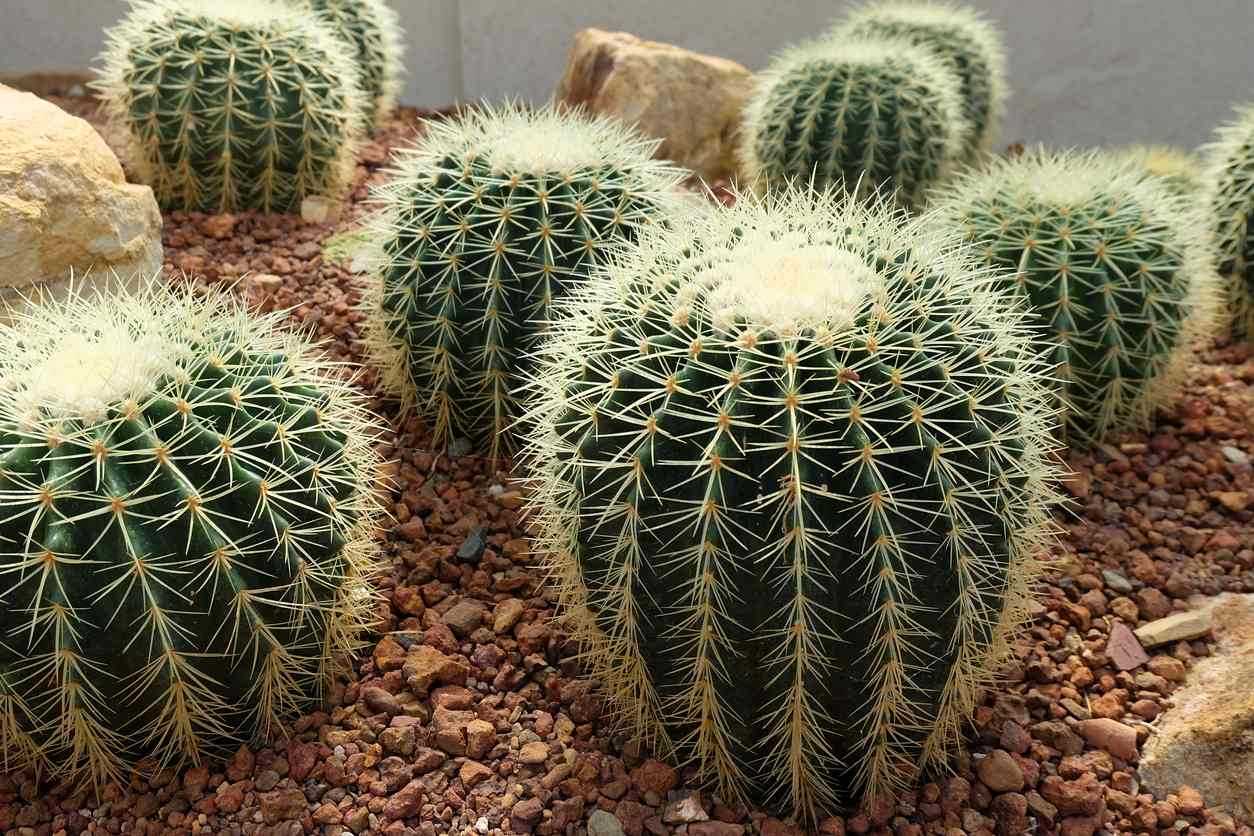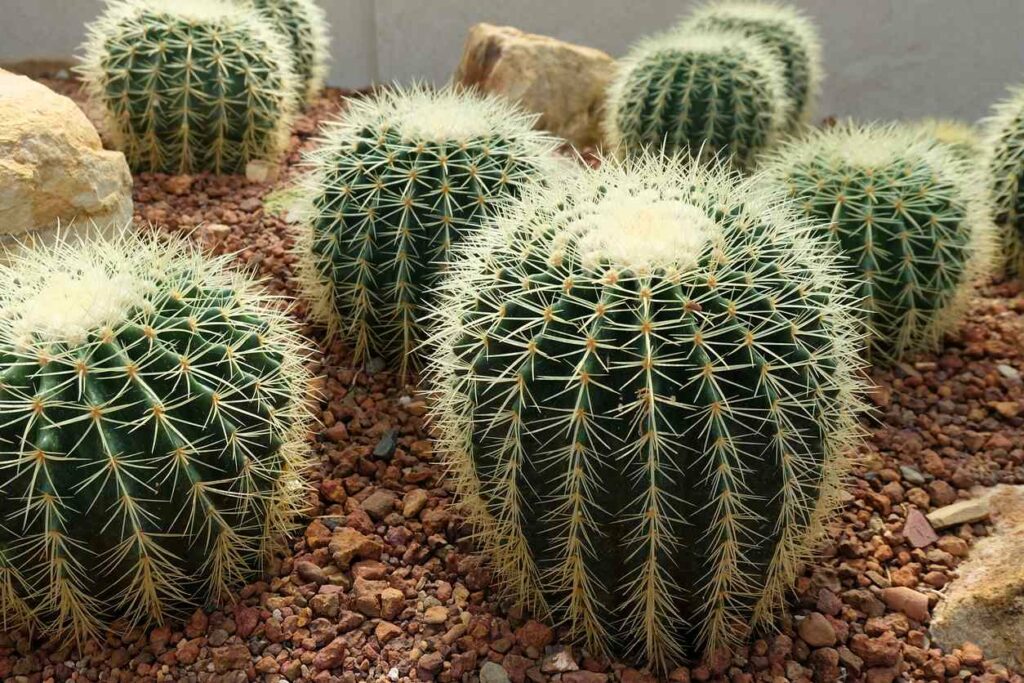Ball Cactus Care: How To Grow & Care For The Parodia Notocactus
Even though this name sounds somewhat alien, you’ve probably come across this succulent once too many times. Three attributes come to mind anytime I think about the Notocactus—resilient, adaptive, and gorgeous. I bet that’s what most tenderfoot gardeners are looking to experience with their first houseplant. In this care guide, we’ll map out all the pointers you need to play around with, to keep your Notocactus plant healthy and blissful every single season.
Fun Facts About The Notocactus Plant
Also popularly known as the Ball Cactus, this succulent isn’t knotty to care for and comes from the tropical parts of South America. Some of the countries it dominantly originates from are Argentina, Brazil, Peru, Uruguay, Colombia, and Bolivia. This easy-to-grow succulent, if perhaps you have no clue, belongs to the Parodia genus. After a few modifications made to this genus, its descendants now include all the houseplants that were formerly known as eriocactus, notocactus, and brasilicactus. One striking thing about most species in the Parodia genus is they prefer a little bit of moisture, compared to most other cacti plants.
As a ball-shaped cactus, this houseplant forms a stunning pattern of clustered spines soon as it hits its growth stages. The spines of this drought-tolerant houseplant also come in shades of yellow, gold, and blue-green. But that deeply hangs on the varying growing conditions. Another incredible feature about this cactus is it has no dire preferences—it can either grow indoors or outdoors as a landscaping plant.
With USDA hardiness zones 6 through 7, this succulent can thrive under dry and arid conditions, so you don’t necessarily need to water it quite often. While most species in the Parodia genus can survive under neglect for months, they’re petite in nature and don’t grow beyond 6″ inches tall. But if you choose to be a little cordial with this plant, it will reach close to one foot after a couple of years.
Other Charming Varieties
- Notocactus scopa- This is one of the most popular varieties you’ll find in your closest gardening store. It features a silver lining on the edges and a few spines that stay intact throughout the seasons. It also blooms up some clustered flowers that are mostly yellow in color, but wither when the room conditions aren’t pleasing.
- Notocactus buiningii (Parodia buiningii)-Same as the Notocactus scopa, this Parodia variety yields some lemon-yellow flowers during summer. If you constantly grow it under the most gratifying conditions, it will produce hairy fruits together with a few black seeds. What most gardening enthusiasts yearn about this variety is its emerald-green foliage that hardly deteriorates even under acute neglect.
- Notocactus schlosseri (Parodia pubescence)-You might want to be a little patient with this variety since it’s a slow-growing plant. But the bright side of it is it’s easy to grow, shoots a few flowers every summer, and has a striking pattern of white to orange spines. On average, the flowers will grow up to 2.5″ inches long.
- Notocactus magnificus (Parodia Magnifica)-Just as its taxonomic name intends to suggest, this is variety is quite magnificent for its densely ribbed structure that forms a spherical shape and lots of spines. The Notocactus magnificus can also juggle as both an indoor or outdoor plant, but sadly, it’s intensely prone to frosting conditions.
- Notocactus leninghausii- Unlike the Notocactus schlosseri which tends to remain petite for years, this particular variety has a mind-blowing potential to reach up to 12″ inches tall. So you might want to consider adopting it if you’re looking for a comparatively bigger houseplant with a medium growth speed.
How to Grow The Ball Cactus
How to make your Ball Cactus healthier, brawny, and opulent hangs on a few hacks that you’ll need to blend together. Like many other succulents, the Ball Cactus can do impressively well both indoors and outdoors. Whether you’re a gardening sensei or this is your first time to hold a shovel, there’s nothing intimidating about making your baby Ball Cactus spring up without repulsive hitches.
Outdoors
Using these simple steps, your Ball Cactus will make a charming and delightful landscaping plant for your garden.
- If you have a partial shade, even better. Although this plant would survive under the scorching sun, growing it under filtered light enhances the level of radiance you’d expect on the entire foliage during its peak growing stages.
- Excellent drainage and aeration is a top-tier priority for this plant even when you’re looking to grow it outdoors. Most cacti plants thrive under porous soil that doesn’t retain water for too long since they naturally absorb enough to kick them through the tough days.
- You can choose to grow it outdoors in a pot or directly in the ground. Whichever method suits you best, just make sure to use a well-draining cactus mix that’s amended with a sizeable portion of organic matter.
- The soil composition needs to ideally have peat moss, ground bark, and coconut fibers to help your plant have a rich supply of nutrients all year round.
- Kill the weeds at their roots and leave the soil dormant for, say, three days, to prevent the remaining seeds from absorbing the moisture that allows them sprout again.
- Summer would be a perfect season to plant your Ball Cactus plant. Low temperatures tend to ruin this plant’s blooming capacity, especially during its tender years.
- After mulching the soil, keep it fairly moist to make your newly propagated plant develop a rigid rooting system.
Indoors
Being a low-maintenance plant, your Ball Cactus can also grow so plushly indoors so long as you can keep an eye on the suitable temperature, and humidity levels. It’s also necessary to tweak the lighting conditions if you want to use it as a decorative houseplant.
- You want to use a medium-sized growing pot with a few drainage holes to save the roots of your Ball Cactus from getting ruined. If there’s excess water beneath the topsoil, it will breed bad bacteria that causes the roots to decay.
- Keep the growing medium in a position where it doesn’t get exposed to direct sunlight. If you’re thinking of placing it on a windowsill, curtains should help filter the UV rays.
- Use porous soil and water your Ball Cactus gently to accelerate the sprouting process.
- You’ll also need to use a well-balanced fertilizer preferably once per month during summer.
Ball Cactus Caring Tips
Taking note of the few cues we just hinted out, it’s quite obvious that there’s nothing too tangled about growing and taking care of your Ball Cactus from scratch. The other handy part would be to staunchly follow a few extra routine requirements, so you can make your plant grow blissfully without any mishaps. And here’s how to go about it.
Soil & Transplanting
As we pointed out earlier in this guide, the most ideal soil structure for this succulent would be a cactus mix that’s well-aerated. It’s essential to take note that fast drainage is a factor that ought to be in the picture. Otherwise, your plant will suffer desperately from multiple strains of fungal infections. So you want to add some bits of sandy soil since it has coarse particles that leave enough gaps and enhance the water absorption capacity. When it’s time to transplant your Ball Cactus into a bigger container, you need to keep the drainage capacity in mind and be careful not to damage the roots while carrying out the exercise. Besides using the cactus mix, regular potting soil amended with perlite, pumice, or sand can also allow your Ball Cactus to develop into a physically fit and cheerful plant.
Watering
As you’re probably aware, you want to be so gentle when it comes to watering your Ball Cactus since too much of it would damage its well-being. You only need to water this succulent frequently when it’s summer. Spring is also a fitting growing period. Even so, you need to regulate the moisture levels during these two seasons. When winter creeps in, lessen the number of waterings since the roots are usually numb due to cold temperatures. Winter is kind of like your plant’s resting period. But no matter the season, the usual drill is to give the soil some grace period to dry out almost entirely before watering your plant next.
Light & Temperature
While your Ball Cactus prefers lots of bright light, protecting it from getting scorched would have a profound effect on the foliage quality each and every season. A south-facing window is the most ideal spot, especially during spring and summer. When it’s winter, you won’t need to move the medium indoors since this succulent can survive through the colder months fairly well. During winter, try to keep your Ball Cactus under room temperatures of between 5 and 15˚C.
Pruning
Grooming isn’t necessary except for when the flowers begin to wilt due to harsh surrounding conditions. You only need to pluck off the dead flowers and use the offsets which fall from the mother plant and grow at the edges of the container for propagation—which we’ll discuss at the end of this guide. Use a soft piece of cloth to dust it off, mostly when the temperatures are high at least once a week. Any dark spots on this plant would mean that it’s exhibiting early signs of rotting. You can cut off the affected areas but if the damage is extreme, it’s only best to get rid of the plant.
Pests & Diseases
While taking care of your Ball Cactus, you’ll probably be prompted to deal with a few sickening issues quite infrequently. But for the most part, the recurring threats will be spider mites, mealybugs, and root rot. You can cut off the part that’s decaying to keep the damage from spreading over the entire plant. Soap spray and neem oil are the most yielding remedies that help suppress any harmful infestation by pests.
How to Propagate Your Ball Cactus
One incredible feature about most species in the Parodia genus is they’re quite easy to propagate. You can opt to use seeds or the offsets that fall from the mother plant and sprout on the edges of the growing medium. These offsets grow in clusters and are overly sensitive so you want to be a little watchful when uprooting them.
To get started, you need to:
- Carefully remove a few offsets from the soil.
- Use water to soften the soil and make the whole exercise a whole lot easier.
- If there are no offsets at the base, you can dissect some from the parent plant using a sharp knife.
- Make sure to sterilize the knife so you don’t transmit the baby offsets with infections
- Cover the offset with a wet towel and leave them under a shade to dry.
- The surrounding environment needs to be a bit warm.
- Within a couple of days, a callus which prevents the offsets from diseases will have formed.
- Your offsets will now be ready for planting.
- Use the growing tips we listed earlier in this guide and you’ll be all set.

